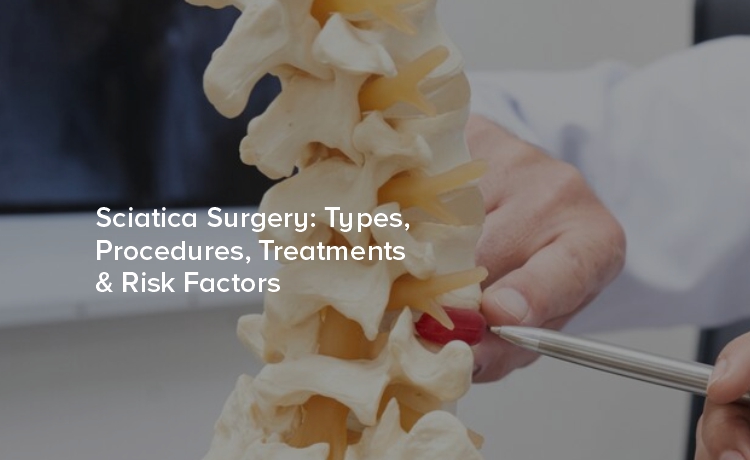
Sciatica can be a painful and debilitating condition, leaving many sufferers in search of effective relief. When conservative treatments such as medication, physical therapy, or lifestyle changes fail to bring comfort, sciatica surgery may offer a solution.
Sciatica is a condition that arises when the sciatic nerve, which runs from the lower back through the hips and down each leg, becomes compressed or irritated. This can lead to pain, tingling, numbness, or weakness in the affected areas. While many people find relief through non-surgical means, some cases require surgical intervention to alleviate symptoms and improve quality of life.
Surgery is typically considered when other treatments have been exhausted and the pain significantly impacts daily activities. It's also a go-to solution if there is significant nerve compression, which can result in muscle weakness or loss of bowel or bladder control. Understanding when surgery is appropriate is vital for making informed decisions about your health.
One of the most common procedures for treating sciatica is a microdiscectomy. This minimally invasive surgery involves removing the portion of a herniated disc pressing on the sciatic nerve. Surgeons make a small incision, often less than an inch, to access the spine, which reduces recovery time and minimizes tissue damage compared to traditional open surgery.
Microdiscectomies are often recommended for those with a herniated disc causing severe leg pain and have not found relief from other treatments. The procedure is generally successful, with a high rate of patients experiencing pain relief. However, it's crucial to discuss the potential risks, such as infection or re-herniation, with your healthcare provider.
A laminectomy is another surgical option for treating sciatica, particularly when spinal stenosis is the culprit. This procedure involves removing part of the vertebra, known as the lamina, to create more space and relieve pressure on the nerves. By decompressing the nerve, a laminectomy can effectively reduce pain and improve mobility.
Patients who undergo a laminectomy often experience significant symptom improvement. However, as with any surgery, there are risks considering, including potential instability in the spine or recurring symptoms over time. It's essential to weigh the benefits against the risks with your healthcare provider.
Foraminotomy is a surgical procedure aimed at enlarging the opening where the nerve root exits the spinal canal. Sciatica can sometimes result from a narrowing of this space, known as foraminal stenosis. By enlarging the foramen, pressure on the sciatic nerve is reduced, alleviating pain.
This procedure is often chosen when other surgical techniques are unsuitable due to the specific location or nature of the nerve compression. While generally effective, a foraminotomy carries risks like damage to the surrounding tissues or infection. Consulting with an experienced surgeon can help minimize these risks.
Spinal fusion is a more invasive surgical option that may be considered in cases of severe degeneration or instability within the spine. The procedure involves joining two or more vertebrae together to reduce motion and alleviate pain caused by instability or deformities. It can also prevent future herniations by stabilizing the spine.
While spinal fusion can significantly improve pain and function, it's not without drawbacks. The recovery period is longer, and there's a risk of adjacent segment disease, where the levels above or below the fusion become stressed and symptomatic. Discussing these considerations with a medical professional is essential for understanding the long-term implications.
An alternative to spinal fusion is disc replacement, which involves removing a damaged disc and replacing it with an artificial one. This procedure aims to maintain more natural spine movement compared to fusion. It can be particularly beneficial for younger patients seeking to preserve mobility.
Disc replacement is still evolving, and while many patients experience relief, it's not suitable for everyone. Factors such as age, overall spine health, and previous surgeries play a role in determining eligibility. Consulting with a specialist who understands your condition is crucial for evaluating this option.
Understanding the risks and recovery associated with sciatica surgery is vital for anyone considering these procedures. Common risks include infection, nerve damage, and blood clots, though these are relatively rare with modern techniques and experienced surgeons.
Recovery time varies depending on the surgery type, individual health, and adherence to post-operative care instructions. Most patients will need physical therapy to regain strength and mobility. Open communication with your healthcare provider throughout the recovery process can help ensure the best outcomes.
While surgery can provide relief, a multidisciplinary approach incorporating physical therapy, lifestyle changes, and ongoing medical care often yields the best results. Engaging with professionals in various fields can provide comprehensive support and prevent future episodes of sciatica.
Tailoring your recovery plan to include exercises, ergonomic adjustments, and regular check-ins with healthcare providers can enhance the benefits of surgery and contribute to long-term wellness. Exploring these avenues with your medical team ensures a holistic approach to your recovery.
Before opting for surgery, it's important to exhaust all non-surgical alternatives. Physical therapy, chiropractic care, acupuncture, and pain management strategies can provide significant relief for many sciatica sufferers. These approaches can often reduce symptoms and improve function without the need for surgical intervention.
Exploring alternative treatments with qualified practitioners can help manage sciatica in a less invasive manner. Discussing these options with your healthcare provider ensures that you make informed decisions about your treatment plan and maximize your chances of success.
Sciatica surgery offers hope for many individuals struggling with chronic pain and limited mobility. Understanding the different surgical options, their procedures, and associated risks allows you to make informed decisions about your healthcare.